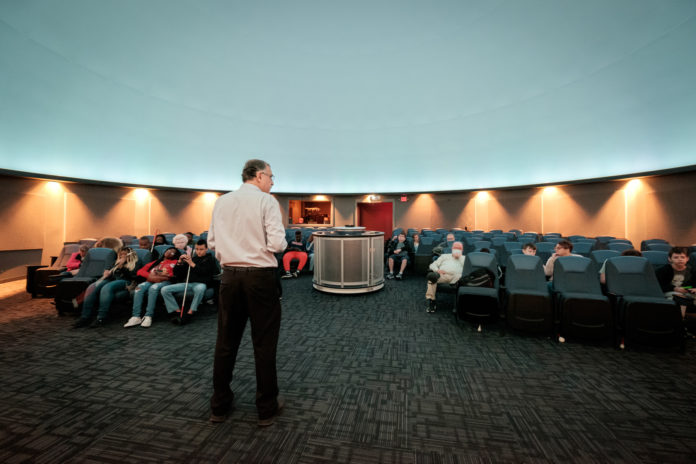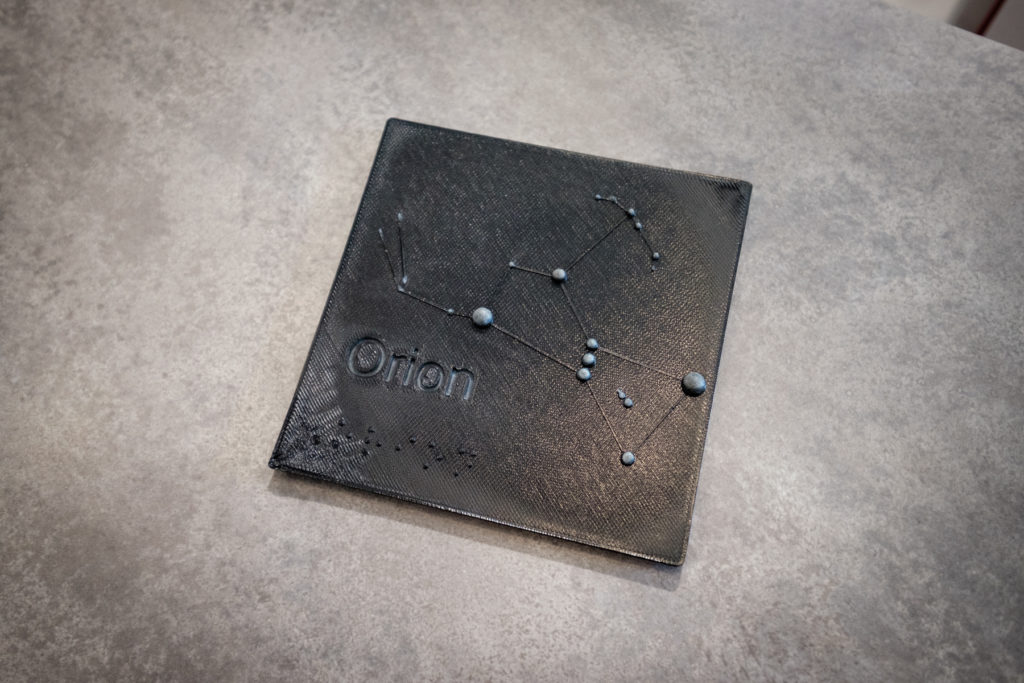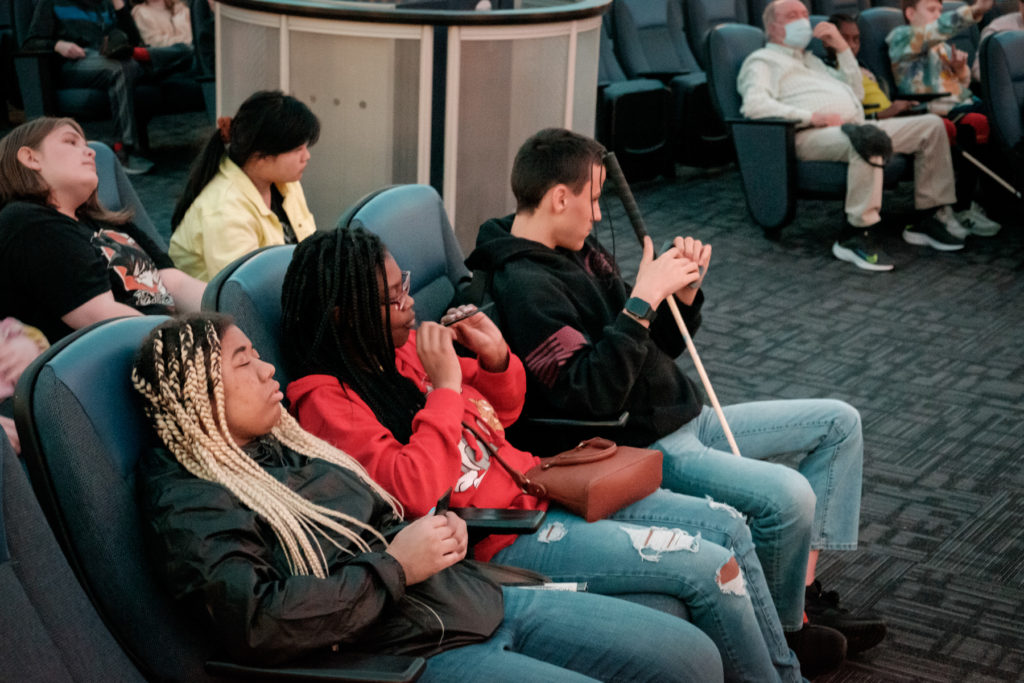
Visually impaired students from the Georgia Academy for the Blind recently experienced a planetarium show designed especially for them.
Instead of looking up at stars projected on a dome, they each held a model of a constellation in their hands.
Dr. Matt Marone, associate professor of physics in the College of Liberal Arts and Sciences at Mercer University, created the models of the Orion constellation using a 3D printer, keeping the needs of the visually impaired in mind.
“We had the name of the model written in Braille at the bottom, and that oriented it. So, when the kids held it in their hands, they could feel the Braille line at the bottom and know that was down,” Dr. Marone said. “Then, I had it oriented so that when they found the last “o” in Orion, they would move that finger up to the first big bump that they felt, which was the star Betelgeuse.
“Then we started the planetarium show talking about that star.”

By feeling the model, the students also could discover the brightness of the stars. Brighter stars had larger diameter hemispheres, and dimmer stars had smaller ones, he said. Some of the major stars were painted with glow-in-the-dark paint, allowing some students to experience the constellation through sight as well.
The 15-minute show, held March 22 in the planetarium at the Museum of Arts and Sciences with the help of Science Curator Paul Fisher, continued as Dr. Marone talked the middle and high school students through feeling the model and about the properties and mythologies of the stars.
“For many, many, many years, people who are visually impaired or blind would just sit in there and listen and not really know what’s going on, or they’d decide not even to attend or even go. A lot of our students had never gone (to a planetarium) before this trip,” said Neel Bennett, a teacher at the Georgia Academy for the Blind and a 2006 Mercer graduate. “It was really cool to have Dr. Marone include the visually impaired in his passion for the constellations.”
The planetarium show was part of a larger event for the Georgia Academy for the Blind at the Macon museum. The day of activities was funded by a grant from the National Informal STEM Education Network, or NISE Net, with the goal of making the museum’s earth and space science exhibits more inclusive, said Kimberly Novak, curator of education at the Museum of Arts and Sciences.
Other activities included the opening of a temporary touch exhibit and claymation video about the different layers of the atmosphere made by Georgia Academy for the Blind students; a small art exhibit on vintage salt cellars — tiny, fancy bowls that hold salt — that students could touch; and a special animal show including pelts and snake skins to touch.
“What helps the visually impaired actually helps everybody,” Novak said. “Touching helps all children learn, not just visually impaired. What helps one, helps all.”
The museum currently has one of the 3D-printed constellations still on site for visually impaired visitors, and Dr. Marone plans to print more.
For him, this is the first step in figuring out ways to make science and physics more accessible to visually impaired children.
“My grand scheme is to see if I can come up with some science experiments or materials that could be used at other academies for the blind, or by people who have a child that is visually impaired, and make science accessible to them,” he said. “They may think that there’s no room for the visually impaired in the science fields, but there can be.”










